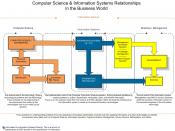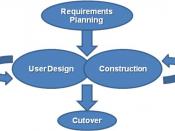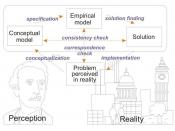Introduction
Most health clubs offer similar services and activities. Fit for Life Health Clubs has approached their business with innovative ideas and a unique philosophy. In essence, the philosophy is that properly designed information systems will enhance profits and reduce overhead while improving existing health club services. Furthermore, the implementation of new services, some of which are unheard of in this field, can be added with little or no financial impact. A well-defined mission statement and business objectives (Appendix A) clearly outline this philosophy. Subsequently, Information Systems created their own objectives, also aligned with those objectives (Appendix B).
This report summarizes the processes Fit for Life will utilize to develop innovative systems, directly aligned with their unique philosophy. These processes from beginning to end are, object-oriented investigation, data modeling, which includes data collection resulting in organizational charts and entity relationship diagrams, object-oriented design, a system design incorporating RAD (Rapid Application Development), and a model-driven DSS, testing, deployment, systems review, and systems maintenance.
Purpose of the Information System
Simply stated, the purpose of information systems is to support the mission and objectives (Appendix A) of the business. The principal goal of any company is to make a profit and so the information systems ideally should provide a means to do just that. In nearly all cases, the information systems support administrative services such as human resources, accounting, finance, marketing, and research. In the case of a health club, information systems will support member and club services, in addition to the administrative services.
The goal of Fit for Life is to provide the means to achieve health and well-being for the members and staff. Information systems will be used to manage member information, educate members and staff, manage member and staff time, discern the needs of our members and staff,



Comment
Its a good essay!
0 out of 0 people found this comment useful.